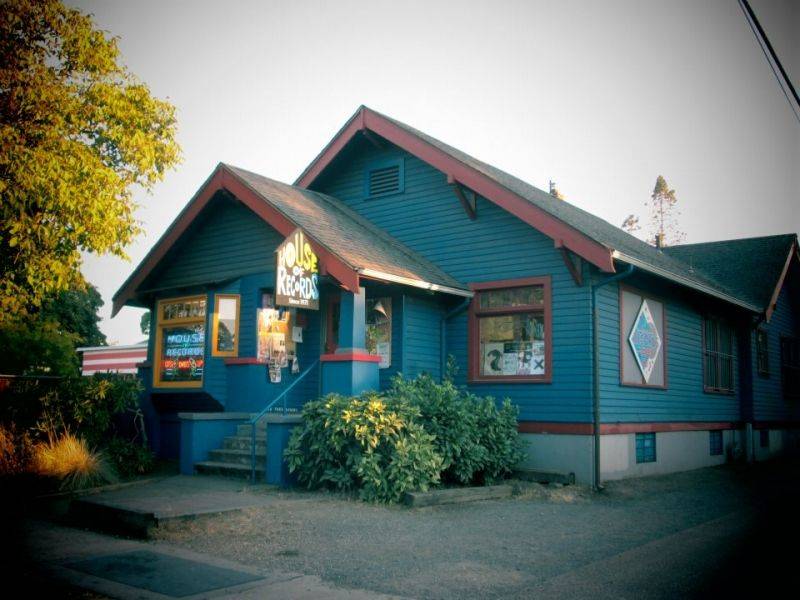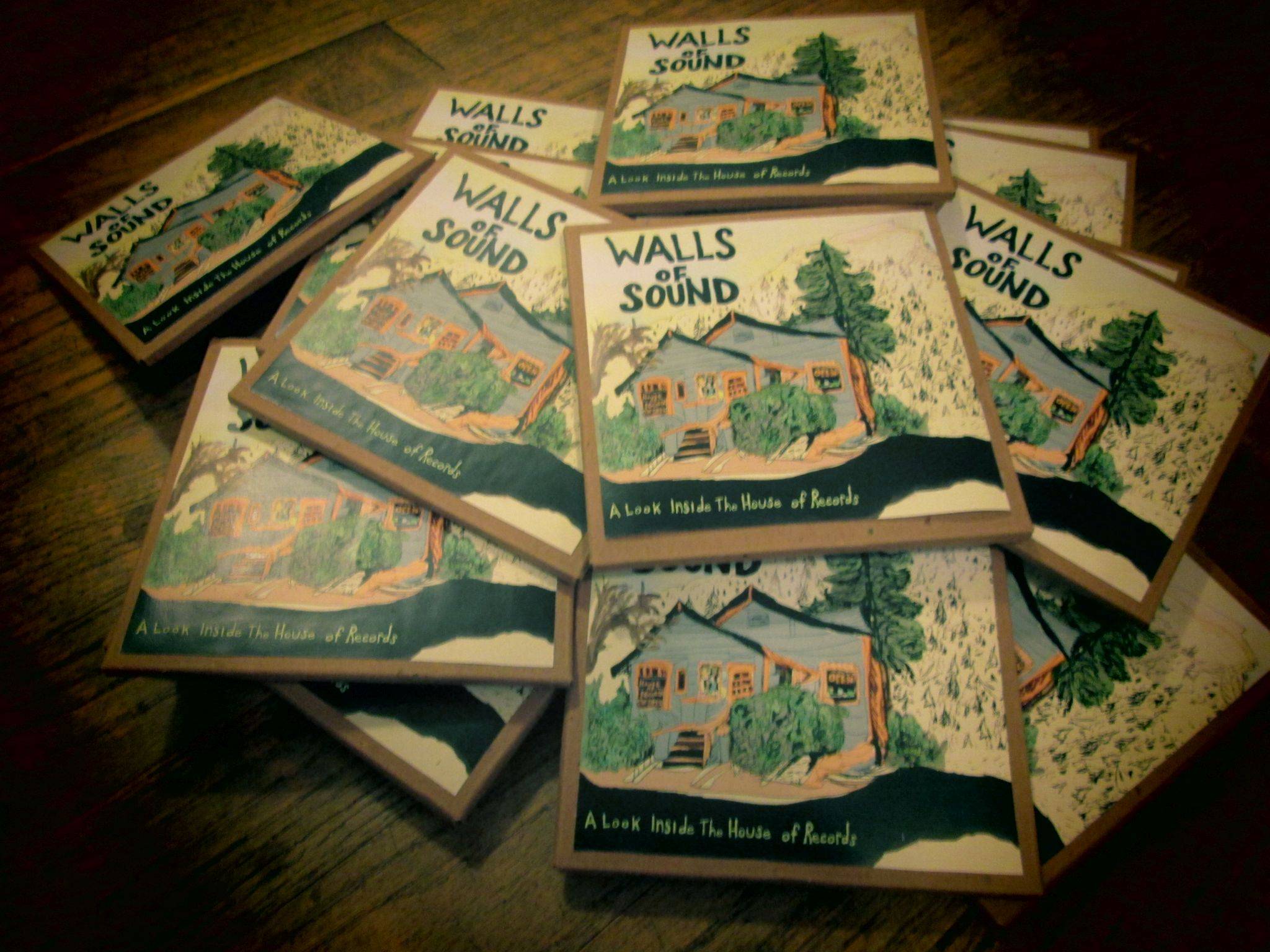Record stores are pretty important places within their respective communities. We’re lucky enough to have two pretty great ones in the Champaign-Urbana community. Some have come and gone (RIP Parasol), and some forms of vinyl, whether it be events or whatnot, continue to make their presence known within the community. Vintage Vinyl Day and Record Store Day to name a few. Although this form of music continues to live on, and in many cases, has picked up steam in recent years as far as popularity goes, record stores continue to exist, recreate ways to maintain their successes, and keep up with the times. Those that don’t typically die. Unfortunately, that’s the name of the game in the age we exist in today.
One local filmmaker has had a lot to say on the subject of record stores and the development of the music industry over the years. David Gracon might be a professor at Eastern Illinois University, but he has lived in Champaign for the duration of his time there. He developed the final portions of his documentary, Walls of Sound: A Look Inside the House of Records, here in C-U, and is screening the film on Saturday evening at Error Records prior to a pretty cool show happening just after the completion of the screening.
Having been a student of Gracon’s (and this is with full disclosure, as he chaired my thesis project when I was completing my Masters degree earlier this year), I’m a big supporter of what he’s doing with Walls of Sound. There’s a ton of insight into the music industry, the communities formed within record stores, and alternative culture at large within the film. I’ve seen the film a couple of times, and it is most definitely worth your time to go see it, or even the small amount to purchase a copy.
I sat down and spoke with Gracon earlier this week about it in preparation for the event at Error on Saturday.
Smile Politely: What was the main inspiration behind Walls of Sound?
David Gracon: Stumbling upon the indie/punk rock record store Home of the Hits in Buffalo, NY as a teenager in the early 90’s was a transformative experience for me. I learned about music that existed on the cultural fringes such as Fugazi, Sonic Youth, Sebadoh, Bikini Kill, the Clash and the Buffalo hardcore and indie scene. I learned that culture happens from the bottom up, and that we all can be active participants and makers of culture (as opposed to being passive recipients with a remote control in hand). I created a fanzine and sold it at the store, and learned about a whole underground DIY community that was a true alternative to mainstream culture. People were putting on their own shows, putting out 7″ records, and making zines. It was an incredibly exciting and creative time. In 2006, Home of the Hits closed and it felt like a limb was amputated. This may sound like a cliche, but the store obviously had a huge cultural and political impact on my life. I not only learned about cool underground music, the music was laden with critiques of society that helped me get to where I am today as a professor. This music was my initial education, not public high school. So to no longer have this space in Buffalo, it feels like a void. And this is happening all over the country. People need a connection to space, place and memory, so I feel it’s important that we keep such stores in business and should actively support them. They are much more than a place to buy and sell things. Through music, we can further humanize ourselves and each other.

House of Records in Eugene, Oregon.
In 2006, I moved to Eugene, Oregon to earn my PhD in Communication Studies. I wanted to know more about the significance of record store culture and wanted to document what felt like a dying business model and (sub)culture. I thus started documenting the House of Records in Eugene—a store that has been around since 1972. The workers are all very quirky, extremely intelligent and insightful. The store itself is visually interesting. These elements all seemed like a recipe for a compelling documentary video.
SP: What was the process of producing the film?
Gracon: I basically was just recording audio interviews for a research methods class at the University of Oregon. I didn’t really think anything would come of it, but the folks at the store encouraged me to make a film. Making a film is very time consuming, and at the time, I felt like I was moving away from filmmaking. So naturally, I didn’t want to make a film at all. But they encouraged me, and I’m glad they did.
The video is very much a lo-fi ethnography. I did everything myself. From the camera and sound, to all the editing which took hundreds of hours. I also constructed the DVD and website. This is a feature length video made with only a couple hundred dollars. It was a very stripped down production. For example, I didn’t use a light kit or a crew as I felt this would alter the reality of the space. I wanted the environment to feel natural. So as a result, the lighting is sorta “poor”. But whatever, I’ve been schooled in punk and I wasn’t interested in being flashy or looking like the images you see on television, which is a boring aesthetic rammed down everyone’s throat. I wanted the video to be simple, quirky and slow moving, sort of like the ebb and flow of Eugene, Oregon.
SP: How much of the production process took place while you’ve lived here in C-U?
Gracon: The entire project was edited here in Champaign (with a whole lot of Japanese sake). I was hired as a faculty member in Communication Studies at Eastern Illinois University, and one of the first projects I wanted to finish was this documentary. I figured it was now or never. I had already finished a lengthy dissertation on the topic, and I wanted to make a film that would be accessible to a wider audience, as nobody wants to read a dissertation. Plus, a real quirky vibe comes through in the video, which for me is difficult to articulate with written words and text. Video is a much better format to capture the nuances and charm of everyday people.
SP: How has the film been different from other documentary work you’ve done in the past?
Gracon: This is the first feature length project I have ever created. So the size and scope was much larger than any of my other projects. My other works tend to be more experimental, so this project is much more straight forward in terms of form and content. I’m trying to appeal to a broader audience with this video.
SP: As someone who has experienced record stores here in C-U, how do you feel that this film relates to record store culture here?
Gracon: Going back to your first question, I’m sure Error Records and Exile on Main Street have had a similar influence on people and the youth cultures here. We live in a society where there are fewer spaces to gather and just be with other people. These stores serve this function, at least for a particular subcultural population. These are spaces where culture happens through live performance. And also just hanging out and talking between sets. And checking out new music and leafing through records and zines. They are spaces where people learn to be active makers and participants of culture. This is a more humanizing experience, hopefully.
Gracon: I have only screened an initial rough cut of the film at the Art Theater as part of the New Art Film Festival. So this is a more tight and final version. It will be cool to screen it at Error Records as they don’t typically do screenings, and it will be followed by local and touring bands. And there is a total lack of venues to screen more local lo-fi media work here in town, as C-U lacks a microcinema screening space. So where can we as media makers screen our work if there is no venue? Since there is no space, we have to make one. At least a temporary one. So this is more of a unique punk rock environment, which is a nice fit for the video as it shares a similar aesthetic language with the music other related record stores. And it was easier to set up the event at Error. I just popped in and talked with Nathan [Landolt] and he was immediately on board with the event, whereas with larger venues, there can be a lot more work, money and bureaucracy involved which can complicate and sometimes squander things. For for at least this event, Error Records is acting as a temporary microcinema. This is a much needed space in Champaign.
In sum, bands and indie record stores are interconnected, so it’s a perfect fit. They mutually reinforce each other. Maybe the kids will crowd surf and slam dance during the screening.
SP: What are you hoping to do with the film in the near future?
Gracon: I’m in the process of getting the work screened in film festivals and currently looking for a more DIY distributor (hopefully Microcosm Publishing). I’m also open to screening presenting it wherever—in basements, community centers, micro-cinemas, living rooms, libraries, a field, universities or in an alleyway. I’m currently selling the video online and in local record stores. I want people to watch and discuss the social importance of local music, alternative media and indie stores. To preserve such spaces and encourage others to create their own spaces.








